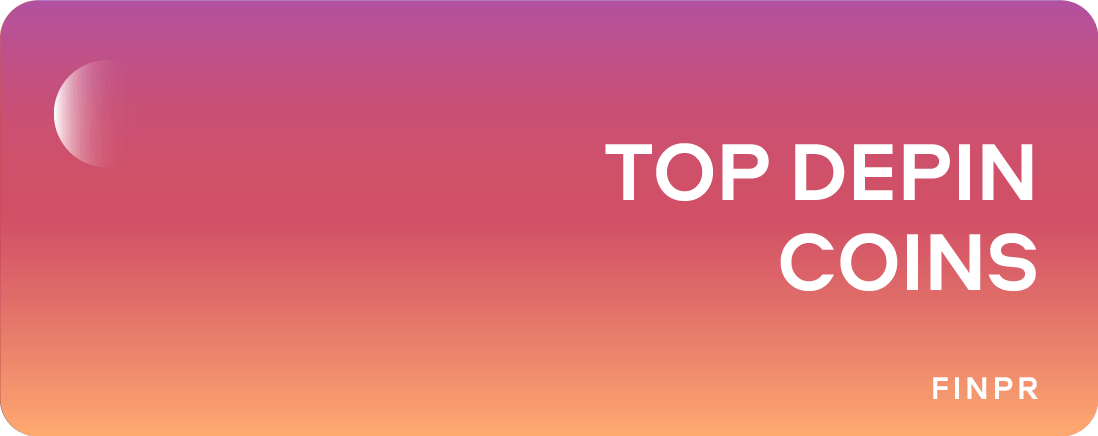
In the rapidly evolving landscape of cryptocurrency and blockchain technology, Decentralized Physical Infrastructure Networks (DePIN) are emerging as a groundbreaking innovation. DePIN represents a fusion of blockchain’s decentralized ethos with physical infrastructure, creating networks that are more secure, efficient, and resilient.
This article explores the top DePIN coins, their unique use cases, and the technology driving these transformative networks.
Explanation of DePIN
Definition of Decentralized Physical Infrastructure Networks (DePIN)
Decentralized Physical Infrastructure Networks, or DePIN, represent an innovative convergence of blockchain technology with physical infrastructure. Unlike traditional centralized systems, DePIN leverages decentralized networks to manage and optimize physical resources, such as computing power, storage capacity, and telecommunications infrastructure. These networks operate through a decentralized, peer-to-peer model, which ensures greater transparency, security, and efficiency.
Importance and Relevance in the Crypto Ecosystem
DePIN plays a crucial role in the evolving landscape of the crypto ecosystem by addressing some of the most pressing issues related to centralized infrastructure. Here are some key points highlighting its importance and relevance:
- Decentralization and Security: DePIN networks distribute control and data storage across multiple nodes, reducing the risk of single points of failure and making the system more resilient against attacks and outages. This decentralization enhances security and trust among users.
- Cost Efficiency: By utilizing underutilized resources such as excess storage or computational power, DePIN networks can offer services at a lower cost compared to traditional centralized providers. This cost efficiency can be particularly beneficial for startups and small-to-medium enterprises.
- Incentivization and Participation: DePIN projects typically employ tokenomics to incentivize participation. Participants in the network, whether they are providing resources or using services, are rewarded with cryptocurrency tokens. This creates a self-sustaining ecosystem where contributions are continuously encouraged and rewarded.
- Innovation and Growth: By decentralizing the control and management of physical infrastructure, DePIN fosters innovation. Projects can develop new applications and services without the constraints imposed by centralized entities. This open environment promotes rapid technological advancement and growth within the crypto space.
Brief Overview of How DePIN Coins Integrate Blockchain with Physical Infrastructure
DePIN coins are the native tokens that power decentralized physical infrastructure networks. These coins serve several critical functions, including:
- Incentivization: DePIN coins reward participants for contributing resources to the network. For example, in a decentralized storage network like Filecoin, users earn FIL tokens for providing storage space. This incentivization ensures a steady supply of resources to the network.
- Payment for Services: Users of DePIN services pay with the native coins. For instance, developers needing GPU power for rendering in the Render network pay with RNDR tokens. This creates a direct economic link between resource providers and consumers, fostering a robust marketplace.
- Governance: Many DePIN networks utilize their native coins for governance purposes. Token holders can vote on proposals and changes to the network, ensuring that the community has a say in its development and operation. This decentralized governance model enhances transparency and accountability.
- Integration with Blockchain Technology: DePIN networks use blockchain for secure, transparent transactions and to maintain an immutable ledger of all activities within the network. Smart contracts automate processes such as payments, resource allocation, and data verification, streamlining operations and reducing the need for intermediaries.
By integrating blockchain technology with physical infrastructure, DePIN coins facilitate the creation of decentralized, efficient, and secure networks that challenge the dominance of traditional centralized infrastructure providers.
Top DePIN Coins: Detailed Overview
1. eTukTuk (TUK)
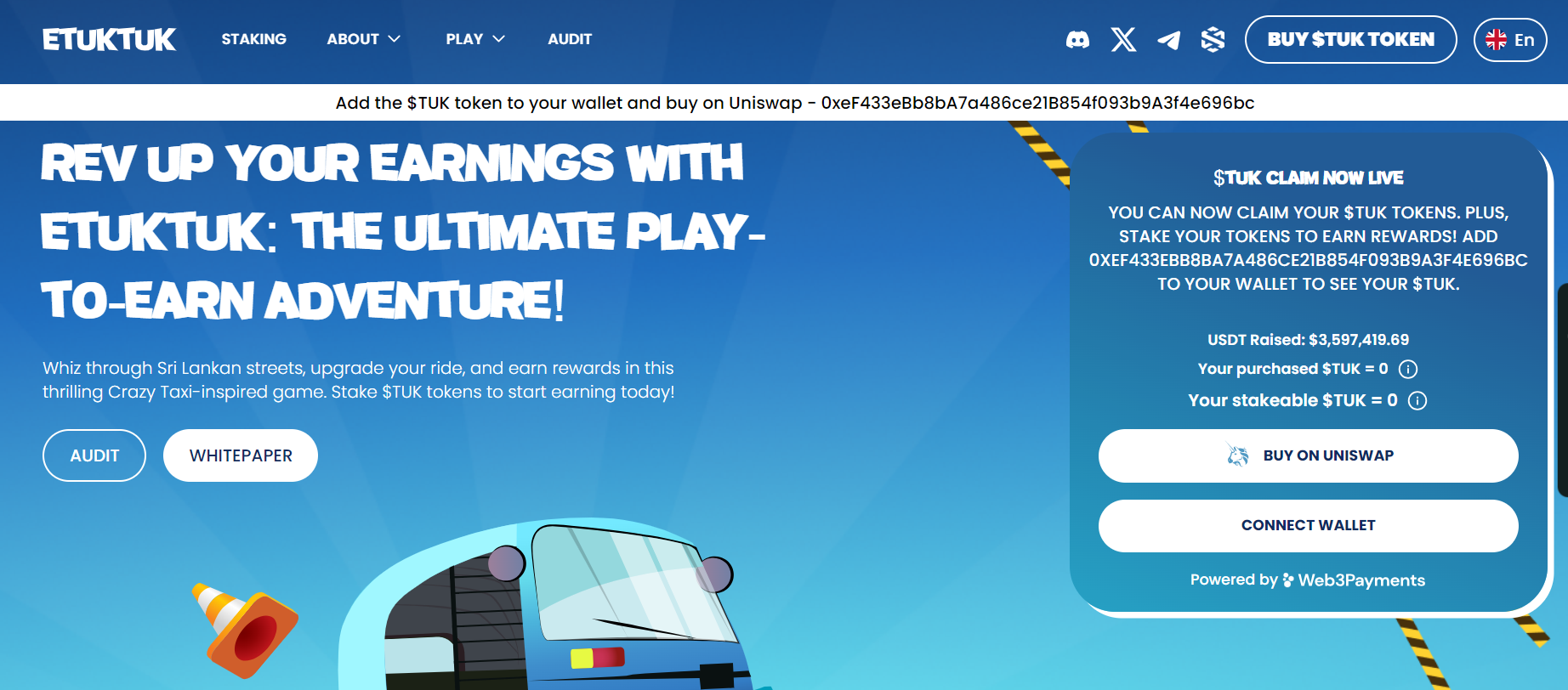
eTukTuk is pioneering the shift towards sustainable transportation in developing nations by replacing traditional internal combustion engine tuk-tuks with electric alternatives. This initiative aims to reduce carbon emissions significantly, improve air quality, and provide an affordable mode of transport. The eTukTuk platform leverages blockchain technology, specifically the Binance Smart Chain, to offer a decentralized, scalable, and efficient network of EV charging stations. This infrastructure not only supports the adoption of electric vehicles but also facilitates financial inclusion by enabling digital identities and banking services for the unbanked population.
The $TUK token is central to eTukTuk's ecosystem, serving multiple purposes, including payments for charging services and staking for passive income. The tokenomics are designed to reward early adopters and contributors, creating a fair and transparent distribution model. The project has garnered significant attention and investment, raising nearly $3 million in its presale phase. Strategic partnerships with entities like the Capital Maharaja Group in Sri Lanka are expected to boost the project’s adoption and impact.
Looking forward, eTukTuk aims to expand its presence by setting up charging stations in key markets and rolling out its driver and passenger apps. These apps will simplify the payment process using $TUK tokens, further integrating blockchain technology into everyday transport services. The platform's focus on ESG (Environmental, Social, and Governance) factors makes it an attractive investment for those looking to support sustainable and socially responsible initiatives.
Key project features:
- Electric vehicle charging infrastructure
- Integration with Binance Smart Chain for scalability and security
- Comprehensive tokenomics rewarding early adopters
- Strategic partnerships to enhance adoption
- Focus on financial inclusion and ESG factors
2. Filecoin (FIL)
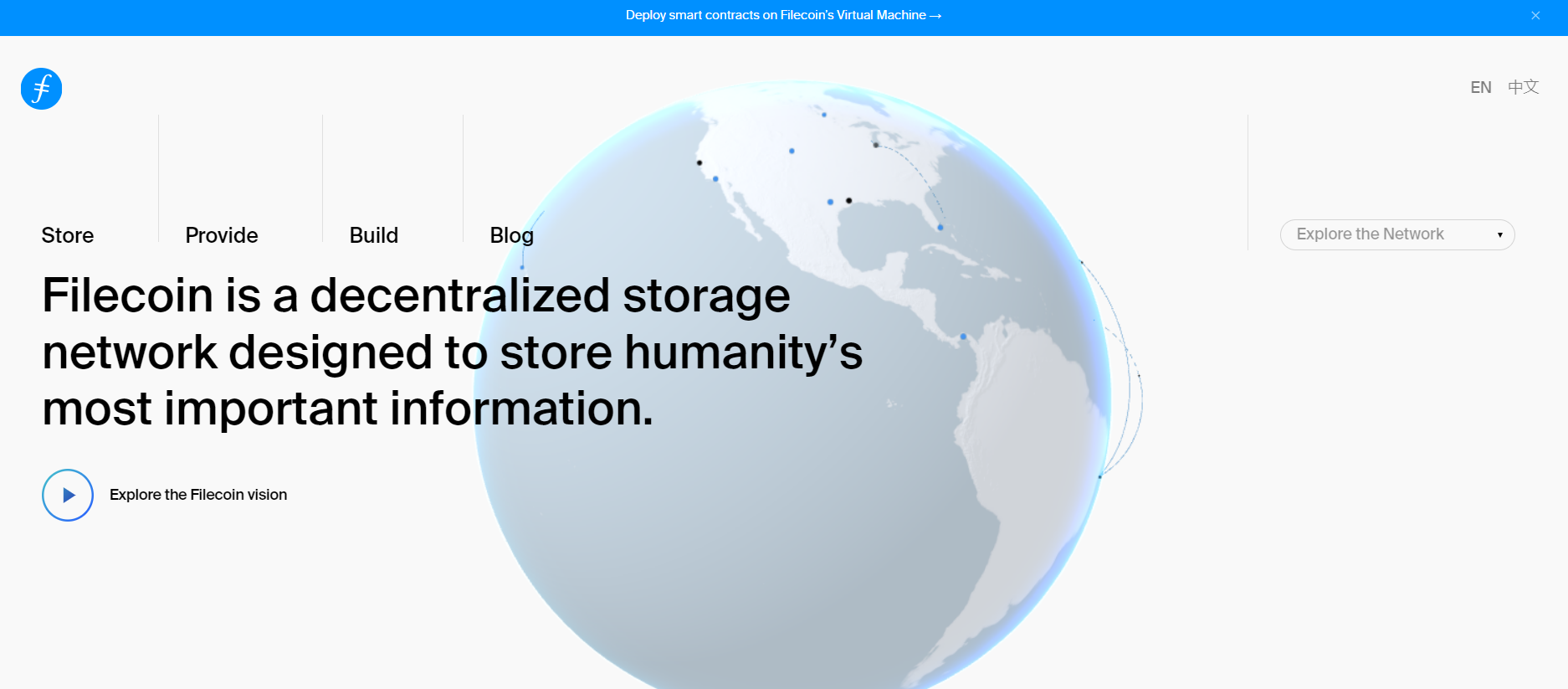
Filecoin is at the forefront of decentralized storage solutions, leveraging blockchain technology to create a distributed network where users can store and retrieve data securely. Unlike traditional centralized storage providers, Filecoin ensures data redundancy and security by distributing files across a global network of nodes. This decentralization not only enhances data protection but also eliminates single points of failure, making the network more resilient and reliable.
The FIL token is integral to the Filecoin ecosystem, incentivizing users to provide storage space and rewarding them for their contributions. Filecoin's use of the InterPlanetary File System (IPFS) protocol allows for efficient data management and retrieval, which is crucial for the growing demand for decentralized applications and services. The project has established itself as a leader in the decentralized storage market, with a market capitalization exceeding $2.5 billion.
Filecoin continues to innovate and expand its services, recently integrating with Solana to enhance its storage capabilities for a broader range of projects. This integration exemplifies Filecoin's commitment to interoperability and expanding its ecosystem. As more businesses and individuals seek secure, decentralized storage solutions, Filecoin is well-positioned to meet this demand and drive further adoption of its platform.
Key project features:
- Decentralized storage using the IPFS protocol
- Incentivization through FIL tokens
- Robust data security and redundancy
- Integration with other blockchain projects for expanded services
- Market leader in decentralized storage solutions
3. Render (RNDR)
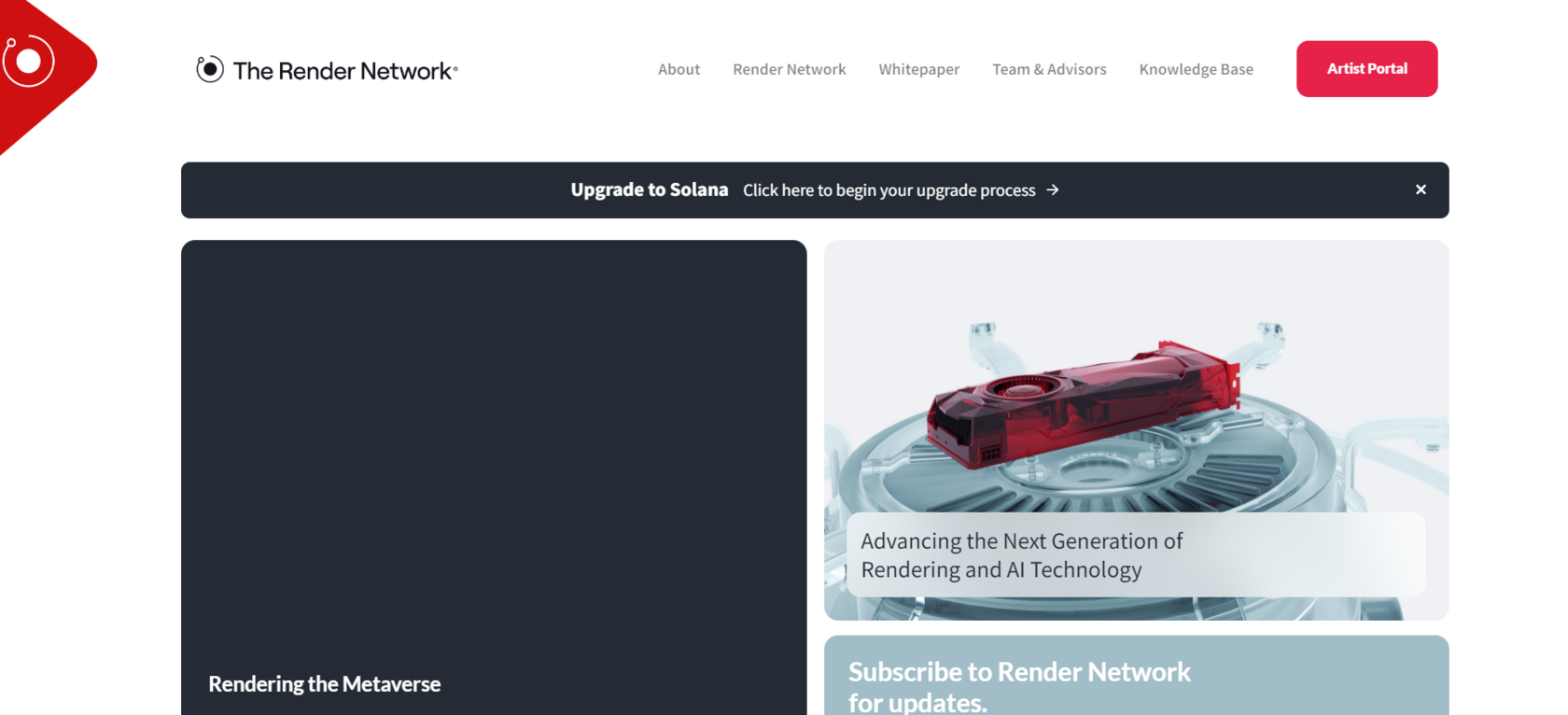
Render is revolutionizing the digital rendering industry by providing a decentralized network that connects users needing rendering power with those who have excess GPU capacity. This peer-to-peer network significantly reduces the costs and barriers to entry for digital rendering, making high-quality rendering accessible to a wider range of users, including small and medium-sized enterprises and independent artists.
The RNDR token facilitates transactions within the Render network, allowing users to pay for rendering services and providers to earn rewards for contributing their GPU power. This model not only democratizes access to rendering resources but also creates a dynamic marketplace for digital rendering. Render’s services are particularly relevant for emerging technologies like virtual reality and metaverse applications, which require substantial computational power.
Over the past year, the RNDR token has seen significant appreciation, reflecting the growing demand for decentralized rendering solutions. The project's alignment with Ethereum ensures strong security and interoperability within the broader blockchain ecosystem. As the digital and creative industries continue to grow, Render’s innovative approach positions it as a key player in the future of digital content creation.
Key project features:
- Decentralized GPU rendering network
- Cost-effective rendering solutions
- RNDR token for transactions and incentives
- Strong relevance for VR and metaverse applications
- Integration with Ethereum for enhanced security
4. Helium (HNT)
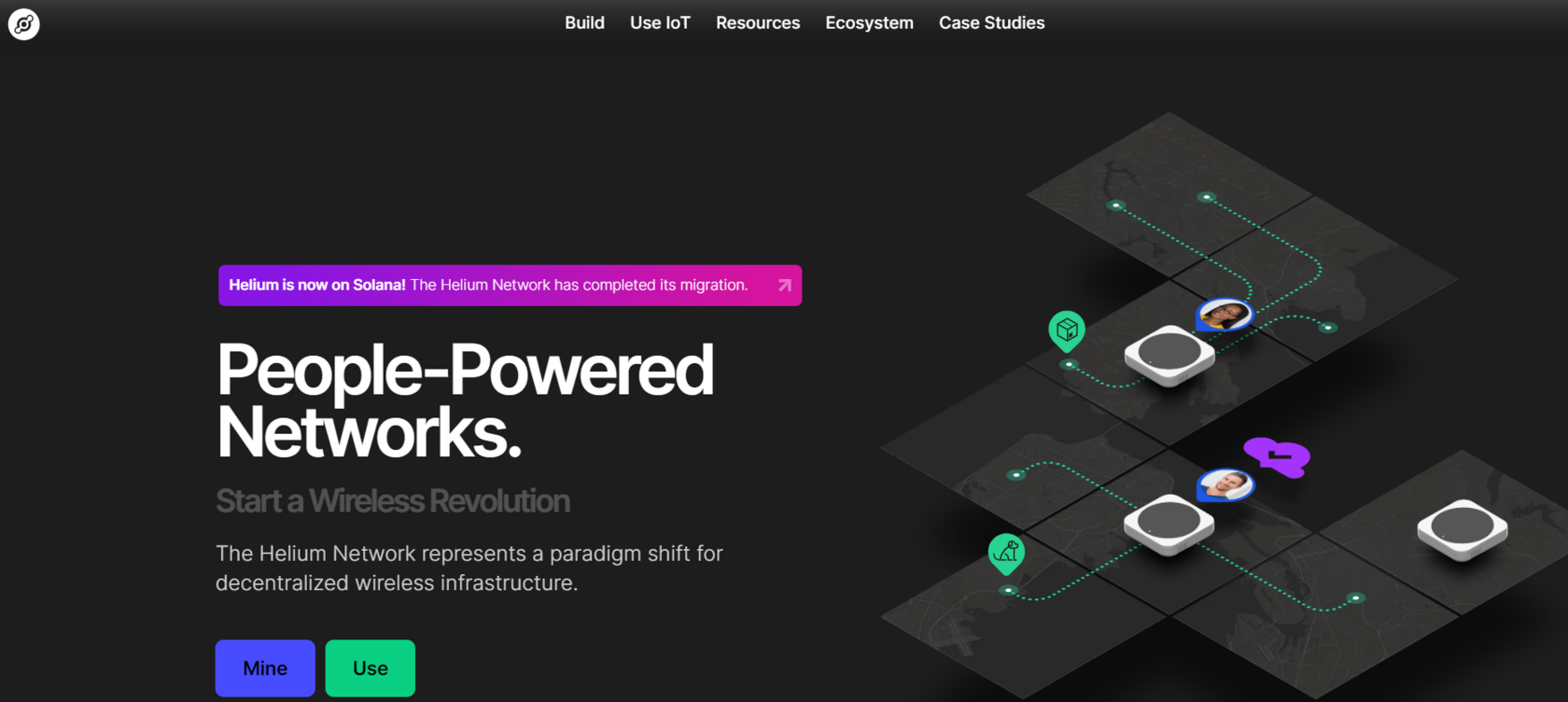
Helium is transforming the Internet of Things (IoT) landscape with its decentralized wireless network, which uses nodes, or hotspots, to provide coverage and data transfer capabilities for IoT devices. This innovative approach reduces reliance on traditional telecom providers and offers a more secure and scalable solution for IoT connectivity. The Helium network is supported by the HNT token, which incentivizes users to set up and maintain hotspots.
Helium has deployed over a million hotspots globally, making it one of the largest and most impactful DePIN projects. The network’s decentralized nature ensures robust coverage and data security, addressing many of the challenges faced by centralized IoT networks. Helium’s strategic transition to the Solana blockchain further enhances its scalability and transaction speed, positioning it for continued growth and adoption.
The HNT token’s utility extends beyond network incentives; it also plays a role in the network’s governance, allowing token holders to participate in decision-making processes. This decentralized governance model enhances transparency and community involvement, contributing to Helium’s success and sustainability.
Key project features:
- Decentralized IoT network with global coverage
- Incentivization through HNT tokens
- Integration with Solana for improved scalability
- Decentralized governance model
- Over a million deployed hotspots
5. Theta Network (THETA)
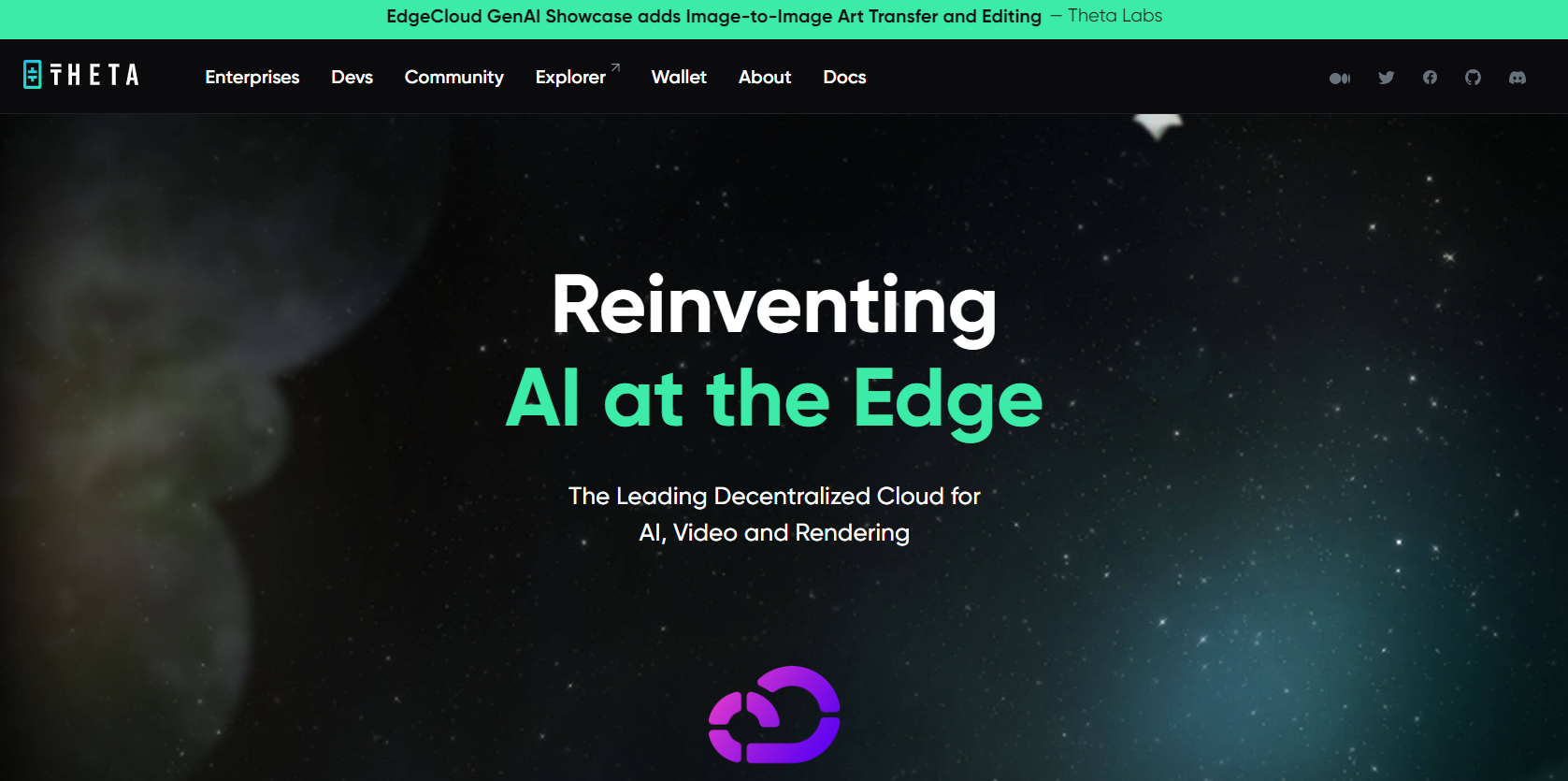
Theta Network is pioneering decentralized video streaming by leveraging blockchain technology to create a more efficient and cost-effective platform for content delivery. By decentralizing the streaming infrastructure, Theta reduces the need for centralized servers, lowering costs and improving the quality of streaming services. The network’s built-in digital rights management (DRM) ensures that content creators receive fair compensation for their work.
The THETA token is central to the network, facilitating transactions and governance. Users can earn THETA tokens by sharing their bandwidth and resources, creating a robust and participatory ecosystem. This model not only enhances the network’s efficiency but also incentivizes user engagement and content sharing.
Theta Network’s strategic partnerships with major companies in the media and entertainment industry highlight its potential for widespread adoption. As the demand for high-quality video content continues to rise, Theta’s decentralized approach offers a compelling alternative to traditional streaming platforms, ensuring better performance and fairer compensation for creators.
Key project features:
- Decentralized video streaming platform
- Built-in digital rights management
- THETA token for transactions and governance
- Incentives for bandwidth sharing and content delivery
- Strategic partnerships in the media industry
6. Siacoin (SC)
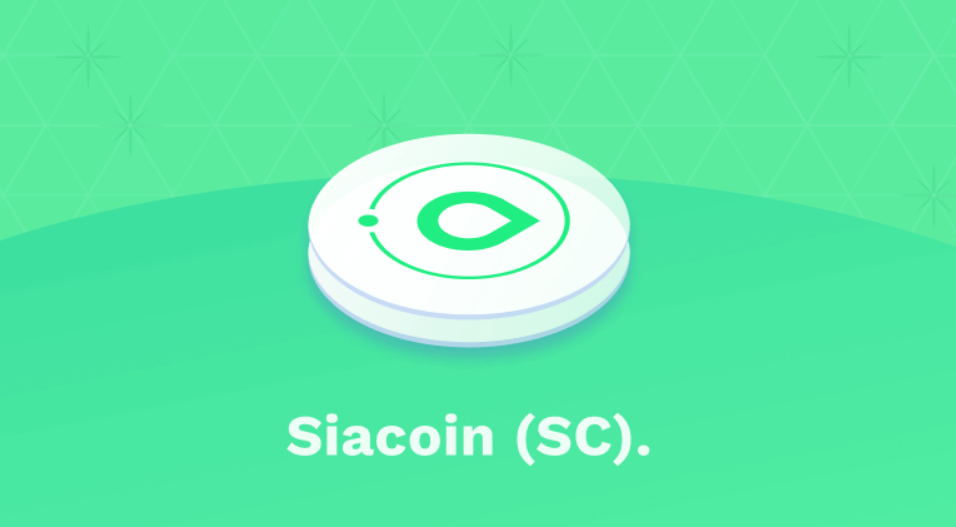
Siacoin is a decentralized storage platform that allows users to rent out their unused storage space and earn SC tokens in return. The platform ensures data security and privacy through encryption, making it inaccessible to unauthorized parties. Siacoin's decentralized approach provides an alternative to traditional cloud storage services by eliminating centralized control and reducing costs.
Siacoin operates using smart contracts to create storage agreements between users and hosts. This peer-to-peer model promotes efficiency and scalability, making it suitable for various applications requiring secure data storage. The network's reliability is further enhanced by its use of redundancy, ensuring data is stored across multiple nodes to prevent loss or corruption.
As the demand for decentralized storage solutions grows, Siacoin is well-positioned to capture a significant market share. Its innovative technology and strong community support make it a promising investment in the decentralized infrastructure space.
Key project features:
- Decentralized storage network
- Encryption for data security
- Redundancy to prevent data loss
- Smart contracts for storage agreements
- SC token incentives for storage providers
7. Akash Network (AKT)
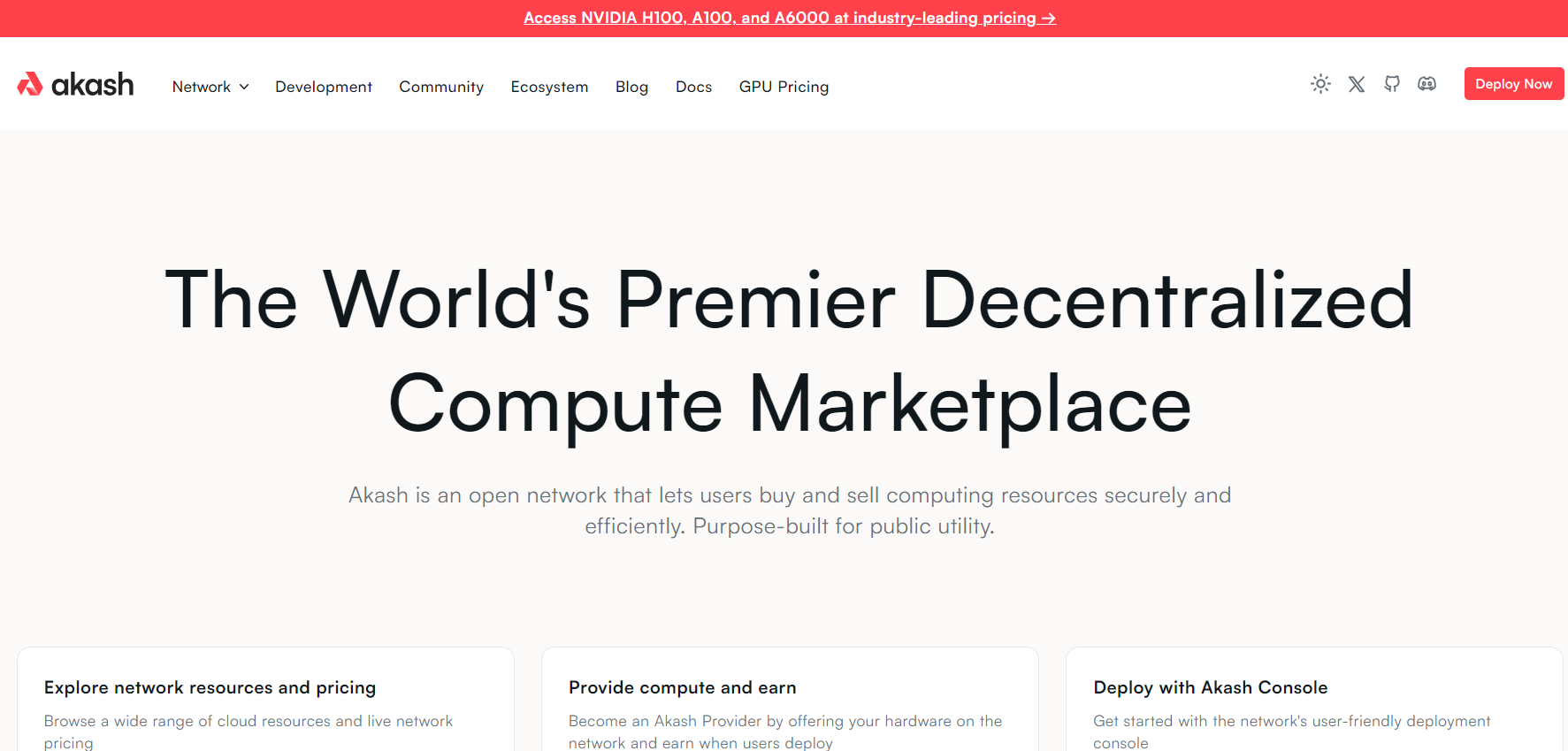
Akash Network is a decentralized cloud computing platform that connects users with underutilized computing resources. Built on the Cosmos SDK, Akash provides a marketplace where users can rent compute power at significantly lower costs than traditional cloud providers. The platform's decentralized nature ensures greater security and transparency in resource allocation.
The AKT token is central to Akash's ecosystem, facilitating transactions and governance. Users can stake AKT tokens to earn rewards and participate in network governance, ensuring a decentralized decision-making process. Akash's innovative approach to cloud computing makes it an attractive option for developers and enterprises looking for cost-effective and secure computing solutions.
Akash's "Supercloud" initiative aims to address inefficiencies in GPU access, further enhancing its service offerings. As demand for decentralized cloud services grows, Akash Network is poised to become a key player in the industry.
Key project features:
- Decentralized cloud computing marketplace
- Lower costs compared to traditional providers
- AKT token for transactions and governance
- Staking rewards and decentralized decision-making
- Supercloud initiative for improved GPU access
8. Hivemapper (HONEY)
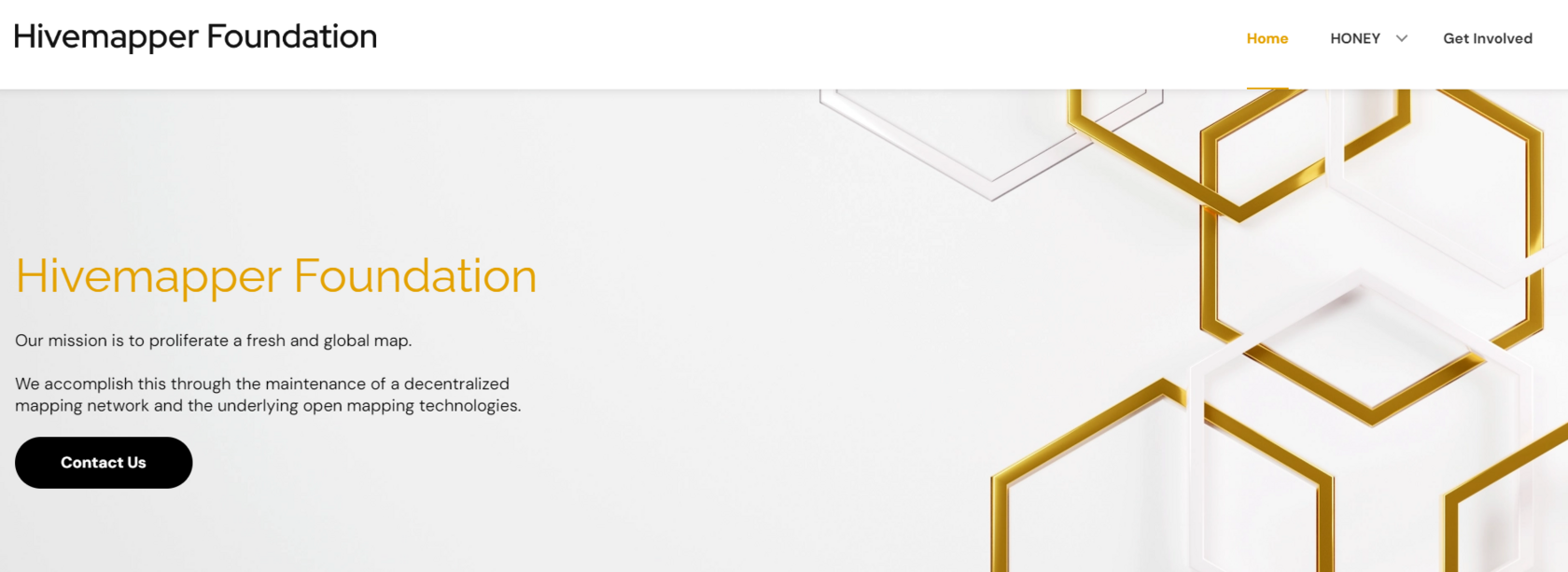
Hivemapper is a decentralized mapping platform that crowdsources visual data and GPS geolocation through dashcams. Drivers are incentivized to capture and share street-level imagery by earning HONEY tokens. This approach creates a comprehensive and up-to-date map of the world's streets, providing valuable data for navigation and location-based services.
Hivemapper's decentralized model ensures that data is continuously updated and maintained by a global network of contributors. This real-time data collection is essential for applications such as autonomous vehicles, urban planning, and disaster response. The platform's use of blockchain technology ensures transparency and security in data management.
As the need for accurate and current mapping data increases, Hivemapper's innovative approach positions it as a leader in the decentralized mapping space.
Key project features:
- Decentralized mapping platform
- Crowdsourced visual data and GPS geolocation
- HONEY token incentives for contributors
- Real-time data updates
- Applications in navigation, urban planning, and more
9. HealthBlocks (HEALTH)

HealthBlocks integrates blockchain technology into the health sector, rewarding users with HEALTH tokens for making healthy decisions and sharing biometric data. The platform aims to promote health and wellness by incentivizing positive lifestyle choices and facilitating the secure sharing of health data. HealthBlocks' decentralized model ensures that data is managed transparently and securely.
The platform's use of blockchain technology enhances the accuracy and reliability of health data, making it valuable for research and healthcare providers. Users are empowered to control their data, choosing how and when to share it, thus promoting data privacy and security.
HealthBlocks' innovative approach to health and wellness, combined with its decentralized data management, positions it as a significant player in the emerging field of blockchain-based health solutions.
Key project features:
- Blockchain integration for health and wellness
- HEALTH tokens for healthy decisions and data sharing
- Secure and transparent data management
- Empowering users to control their health data
- Valuable for research and healthcare providers
10. ColdStack (CLS)
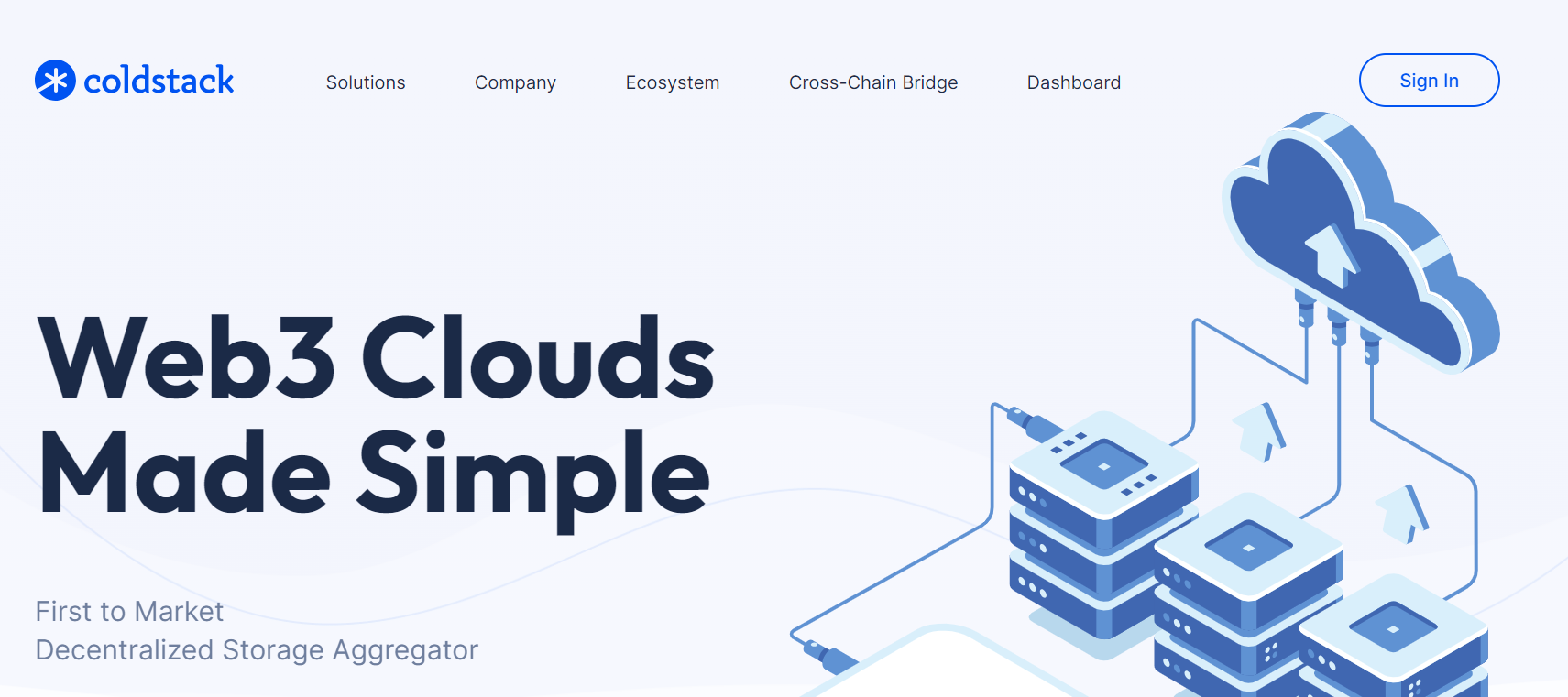
ColdStack is the first Decentralized Cloud Aggregator that unites various decentralized storage platforms, including Filecoin, under a single interface. By leveraging AI for optimal storage selection, ColdStack offers a seamless, cost-effective, and secure storage solution. Users benefit from the aggregated power of multiple decentralized storage networks, ensuring that their data is distributed securely without the need for extensive data migration.
ColdStack’s platform is designed to be user-friendly, appealing not only to crypto projects but also to a wider audience seeking reliable and efficient storage solutions. The integration of AI in the selection process ensures that users always get the best price-performance ratio for their storage needs, making ColdStack a standout in the DePIN space.
Key project features:
- Decentralized cloud aggregator
- AI-driven storage selection
- Integration with multiple storage platforms
- Cost-effective and secure storage solutions
- User-friendly interface
11. Quantum Resistant Ledger (QRL)
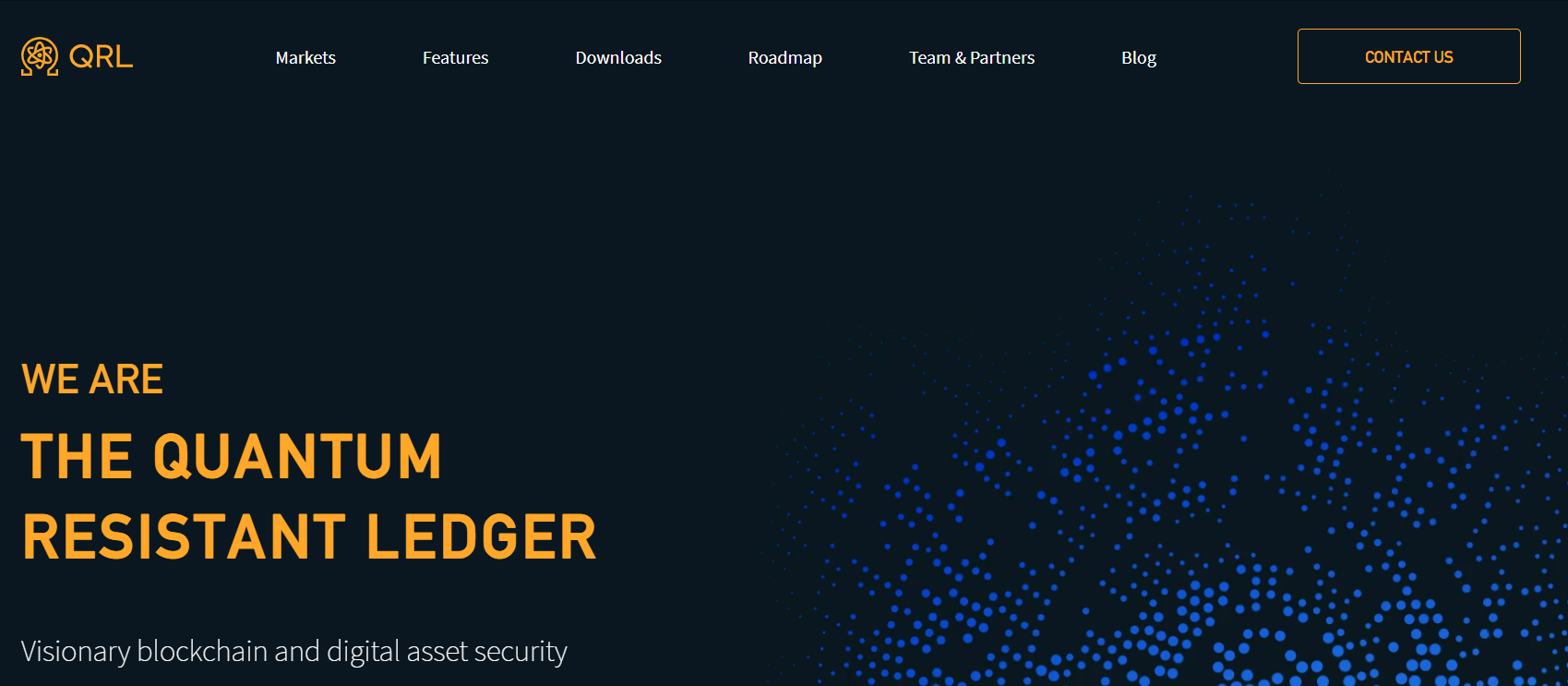
Quantum Resistant Ledger (QRL) is a blockchain designed to be secure against the threats posed by quantum computing. Utilizing post-quantum cryptography, QRL aims to provide long-term security for digital assets and data. The blockchain employs the XMSS (eXtended Merkle Signature Scheme), which is endorsed by the National Institute of Standards and Technology (NIST) for its quantum resistance.
QRL’s focus on future-proof security makes it an essential project in the context of advancing quantum technologies. By addressing potential vulnerabilities in traditional cryptographic protocols, QRL is setting a new standard for blockchain security.
Key project features:
- Quantum-safe blockchain technology
- Utilizes XMSS for security
- Endorsed by NIST
- Focus on long-term digital security
- Future-proof cryptographic protocols
12. MultiversX (EGLD)
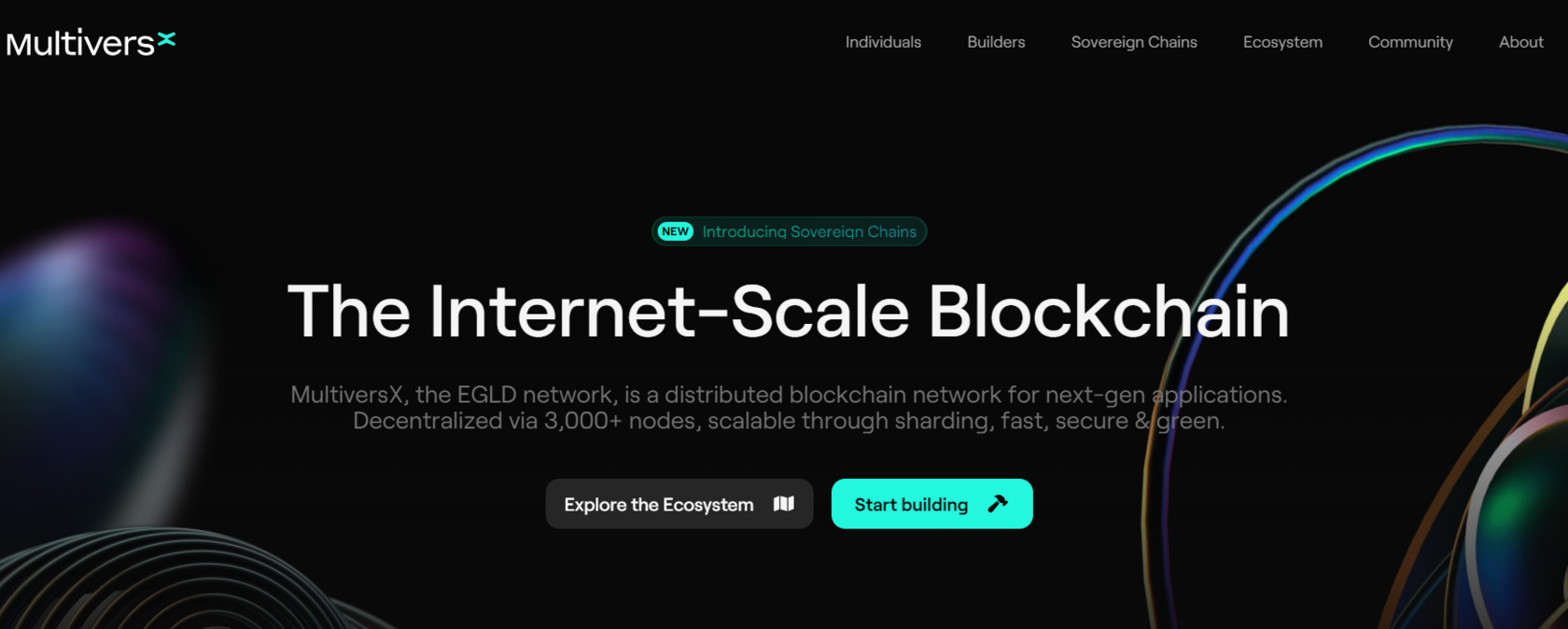
MultiversX is a versatile DePIN project that supports decentralized finance, Internet of Things (IoT), and more. The project is known for its high scalability, with the ability to process up to 100,000 transactions per second at minimal costs. This makes it ideal for micro-transactions and various decentralized applications.
MultiversX’s blockchain infrastructure is designed to support both online and offline DePIN initiatives. For instance, it can facilitate collateralized stablecoin loans for traditional lending companies or enhance data integrity using zero-knowledge proofs. The platform’s native token, EGLD, is central to its operations, providing the necessary fuel for transactions and smart contracts.
Key project features:
- High scalability (up to 100,000 TPS)
- Low transaction costs
- Supports DeFi and IoT applications
- Collateralized stablecoin loans
- Data integrity through zero-knowledge proofs
13. Silencio (NOISE)
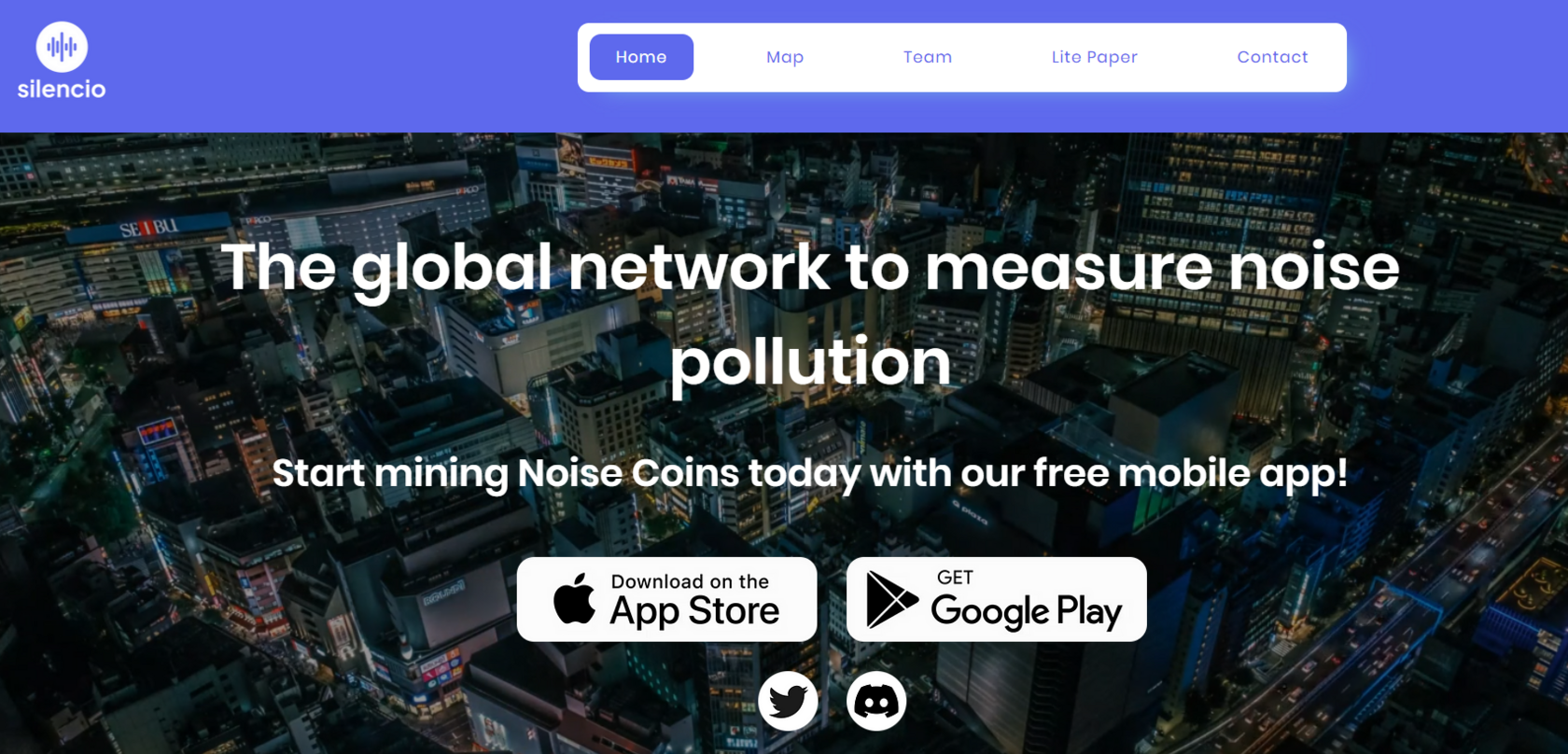
Silencio is a unique DePIN project addressing the issue of noise pollution, a $100 billion problem impacting various industries. Users participate by downloading an app that uses their phone’s microphone to track noise levels in different areas. This data is then used to create a detailed noise map, helping businesses make informed decisions about location and operations.
Participants are rewarded with NOISE tokens for their contributions. While still in its early stages and not yet listed on exchanges, Silencio offers a novel approach to crowd-sourced environmental monitoring, potentially opening new avenues for community-driven data collection and analysis.
Key project features:
- Addresses noise pollution
- Community-driven data collection
- App-based noise tracking
- Rewards participants with NOISE tokens
- Early-stage speculative project
14. Powerledger (POWR)
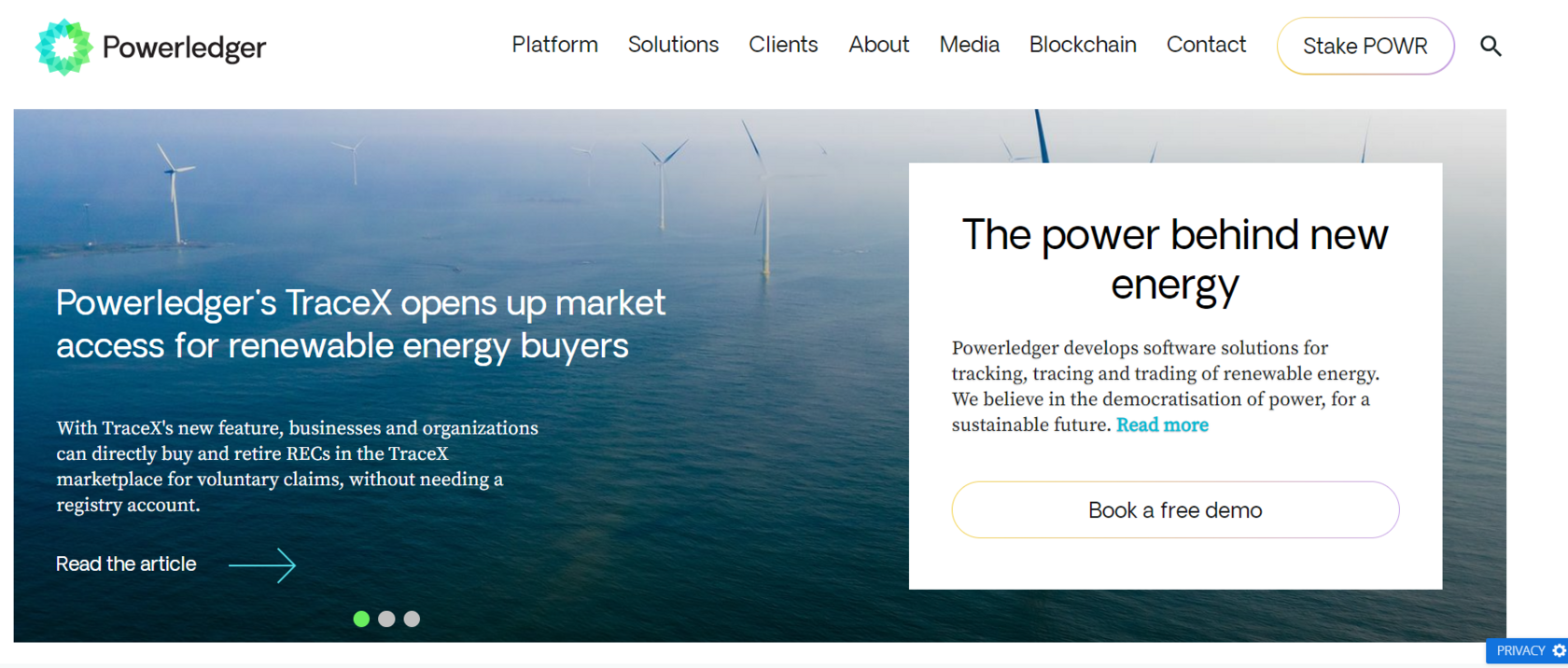
Powerledger creates a peer-to-peer marketplace for solar power exchange, allowing users to trade excess energy. This project aims to democratize access to renewable energy, particularly in regions lacking the infrastructure to support widespread solar power adoption. By leveraging blockchain technology, Powerledger ensures transparent and secure energy transactions.
Users are incentivized to participate in the network through the POWR token, which facilitates energy trading and rewards. Powerledger’s approach helps optimize the use of renewable energy, reduce waste, and promote sustainable energy practices globally.
Key project features:
- Peer-to-peer solar power exchange
- Promotes renewable energy adoption
- Transparent and secure transactions
- POWR token for trading and rewards
- Focus on sustainability and reducing energy waste
How the FINPR Team Ranks Coins
We score each project on real usage, sound token design, traction, market quality, and risk.
Key Features for Scaling DePINs
To scale effectively, DePIN applications require certain features from the underlying blockchain infrastructure:
- Scalability: The ability to handle high volumes of transactions and data throughput is crucial.
- Transaction Economics: Low transaction fees are essential for sustainability as DePIN applications often involve numerous transactions.
- Interoperability: Seamless communication with other blockchain networks and legacy systems is necessary.
- Security: Robust encryption, authentication, and consensus mechanisms safeguard sensitive information.
- Usability: User-friendly interfaces and intuitive design facilitate broader adoption.
DePINs offer numerous benefits, including improved system resilience, equitable resource access, and sustainable practices. By decentralizing control, they reduce single points of failure and enhance the robustness of networks.
However, challenges such as regulatory hurdles, scalability limitations, and security concerns need to be addressed to achieve widespread adoption. Effective DePIN marketing strategies are essential to promote the adoption and growth of decentralized physical infrastructure networks, ensuring they reach their full potential in various industries.
Conclusion
DePIN represent a transformative approach to managing and optimizing physical resources through blockchain technology. These networks enhance the resilience and transparency of services, making them an attractive alternative to traditional centralized systems.
DePIN coins, integral to these networks, play a crucial role in incentivizing participation, facilitating payments for services, and enabling decentralized governance. Projects exemplify the diverse applications and benefits of DePIN, from reducing pollution with electric tuk-tuks to providing decentralized cloud storage and rendering services.
The integration of blockchain with physical infrastructure through DePIN not only improves existing services but also fosters a robust and sustainable ecosystem where contributions are continuously rewarded. By integrating layer2 solutions, DePIN projects can enhance their scalability and transaction speeds, making decentralized physical infrastructure more efficient and user-friendly. This innovative approach holds significant potential for future growth and development, paving the way for a more decentralized and efficient infrastructure landscape.




